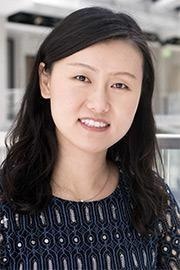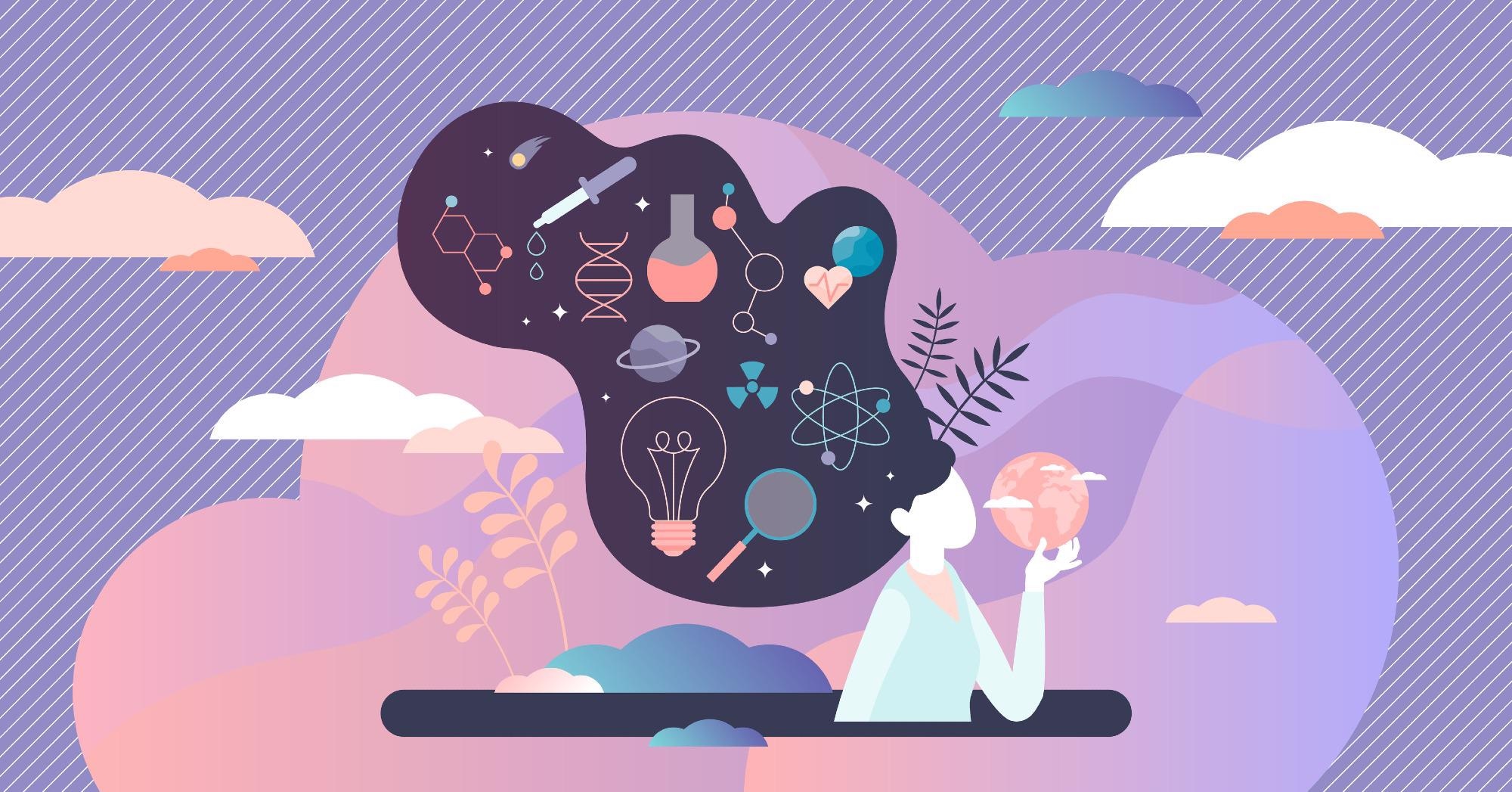The role women and girls play in STEM is honored annually by the United Nations on the International Day of Women and Girls in Science. This year, emphasis is placed on recognizing how these individuals are agents of change, catalyzing innovation across STEM sectors.
AZoSensors is passionate about sharing science with the world and those who can make a difference. Therefore, this year, we highlight a selection of inspiring women across the Sensors field.

We put the following questions to each representative, gaining an insightful view on how science has shaped their career, what changes can be made to address the issues women face in STEM paths, and the innovations impacting the future of the field.
What inspired you to initially pursue a career in science?
Prof. Lina Sarro, Head of the Electronic Components, Technology and Materials Laboratory, Department of Microlelectronics, TU Delft
 During my study at the university, I found research extremely fascinating. The feeling of being able to understand things on the one hand and generate new ideas or solutions on the other was very exciting.
During my study at the university, I found research extremely fascinating. The feeling of being able to understand things on the one hand and generate new ideas or solutions on the other was very exciting.
My advice to young girls and women is to find their passion and, if it is in science, look for good schools and join good research groups. Established professors and researchers can help introduce you to the international community and will support you.
Dr. Nanshu Lu, Temple Foundation Endowed Associate Professor, University of Texas at Austin
 My father is very handy and to my young eyes could fix "everything" in our home. My mom enjoyed learning and obtained her LLM at 48 years old. As I progressed in my education, the more I learned, the more I enjoyed the rigor and the logic in science.
My father is very handy and to my young eyes could fix "everything" in our home. My mom enjoyed learning and obtained her LLM at 48 years old. As I progressed in my education, the more I learned, the more I enjoyed the rigor and the logic in science.
Science is unambiguous, trustworthy, and beautiful to me.
To young women and girls to start their careers within the STEM sector, I would like to say that STEM can fundamentally transform the world and improve the quality of people's lives.
Having faith in yourselves and you'll find that you can go much further than you thought and you'll get much more support than you hoped.
Dr. Nako Nakatsuka, Senior Scientist, Laboratory of Biosensors and Bioelectronics (LBB), ETH Zurich
 I was inspired to pursue a career in science in high school because I was excited about the lab classes taught by an engaging teacher. But after two years of taking chemistry classes at my university, I was uninspired – I was unsure how chemistry could make a societal impact.
I was inspired to pursue a career in science in high school because I was excited about the lab classes taught by an engaging teacher. But after two years of taking chemistry classes at my university, I was uninspired – I was unsure how chemistry could make a societal impact.
Outside of courses, I ran for the cross country as well as the track and field team in university, but I had broken my ankle in a race and was on crutches for six months.
That was when I met Prof. Banerjee, who was my organic chemistry lab instructor at the time. Prof. Banerjee offered me a research project in tissue engineering to heal such injuries without the need for surgery using nanobiotechnology.
It was the first time I made the connection between what I learned in the classroom and applying this knowledge to clinically relevant applications, which has been my motivator in scientific research since.
Jill Gostin, Principal Research Scientist, Georgia Tech Research Institute
 I am a mathematician who has worked on various aspects and types of sensor systems since I graduated from college. My love for mathematics started at a young age. For my 5th birthday, I was given a third-grade math book. I thought it was the best present I had ever gotten!
I am a mathematician who has worked on various aspects and types of sensor systems since I graduated from college. My love for mathematics started at a young age. For my 5th birthday, I was given a third-grade math book. I thought it was the best present I had ever gotten!
As I progressed further along in school and found that my love for mathematics continued, I also found an affinity for physics and computer programming. I majored in mathematics with a minor in Computer Science at college and knew I wanted to apply mathematics to real-world problems!
When I graduated with my bachelor's degree, I knew that with my strong math and computer programming training and experience, I could learn how to apply that to multiple fields of study.
I ended up accepting an offer to work at the Georgia Tech Research Institute (GTRI), in what was then the Radar and Instrumentation Laboratory. One of the first things I had to do when I started was to learn about Radar. I still work at GTRI, and my work has encompassed multiple sensor systems.
Keep in mind that all the technology you see and use today is there because of scientists, technologists, engineers, and mathematicians – their work has impacted your life!
My advice is to believe in yourself and not be afraid to try something new. Opportunities don't always just happen, sometimes you have to make them happen!
If you want to make a positive impact on the world, a STEM career will give you an opportunity to do that.
Science, as well as gender equality, are both vital in achieving the UN's sustainable development goals, yet women still only represent 33.3% of the global research community. What more can be done to ensure equal access for women and girls in science?
Prof. Lina Sarro, Head of the Electronic Components, Technology and Materials Laboratory, Department of Microlelectronics, TU Delft
I believe that young researchers need 'practical' support from the organization they work in: good and flexible child care; flexible working hours; reduced teaching load after maternity leave; 'paternity leave' for men to reduce differences between genders. An example of this approach is already underway in countries like Sweden.
Dr. Nanshu Lu, Temple Foundation Endowed Associate Professor, University of Texas at Austin
I believe that women could make much more contributions to science. But role models, family, especially spousal support, and societal bias correction are all required to further enhance research participation by women.
Dr. Nako Nakatsuka, Senior Scientist, Laboratory of Biosensors and Bioelectronics (LBB), ETH Zurich
There are multifaceted aspects to tackle when we think about the global research community. In developed countries, I believe the key is to expose more young girls to science, technology, and engineering to eliminate gender stereotypes.
I tutored a 5-year-old girl during my Ph.D. and brought over nanoscience experiments to her home, which significantly increased her interest.
Excitement about science from a young age will lead to more women and other underrepresented groups wanting to pursue these fields.
In turn, seeing role models that are relatable in research will encourage retention of these individuals, as they will no longer be the "one" representative minority.
However, general accessibility to science in developing countries is still needed, which necessitates improved infrastructure, teacher training, and scientific equipment. Since we live in a highly digitalized world, rendering highly rated high school/university courses accessible online may lower the barrier for students applying for fellowship programs at international institutions.
Why Support Women and Girls in Science and Technology?
Why Support Women and Girls in Science and Technology? Video Credit: UN Women/Shutterstock.com
Jill Gostin, Principal Research Scientist, Georgia Tech Research Institute
Young girls need to have strong female role models in STEM careers. They need teachers who understand that girls are just as capable as boys in science and math, encouraging them to pursue such careers.
Women in STEM careers need to visit schools to talk with both male and female students about their careers, including the impact they are making on our world.
The leadership in companies needs to work to overcome implicit biases and ensure that women are getting the same opportunities and recognition as their male counterparts. In conversations and work meetings, it has been shown that women get interrupted more often than men, and their ideas and suggestions get overlooked.
Companies also need to find ways to support a better work-life balance. This especially comes into play when women are in mid-career and both work and family demands are increasing.
We need to work together and improve our ability to communicate and listen. It takes a global change across genders, within schools, across businesses, and in our homes.
Are there any particular innovations over the years that have stuck out to you, and what impact do you think they will have on the field in the future?
Prof. Lina Sarro, Head of the Electronic Components, Technology and Materials Laboratory, Department of Microlelectronics, TU Delft
In my case, I am part of a large research program (Netherlands Organ-on-chip Initiative) in which biology and technology, thus researchers from Biology and Electronics, work together towards groundbreaking contributions in healthcare.
Dr. Nanshu Lu, Temple Foundation Endowed Associate Professor, University of Texas at Austin
I am most excited about how soft materials and soft devices have found their way to revolutionize human healthcare and human-robot interaction in the recent decade.
I envision that in the future, humans will be more connected to the internet and robots will be more like humans.
Dr. Nako Nakatsuka, Senior Scientist, Laboratory of Biosensors and Bioelectronics (LBB), ETH Zurich
I believe healthcare is going to transform towards remote diagnostics and telemedicine where you can conduct tests at home and be advised virtually.
Such innovations will improve accessibility to healthcare, which is far from universal today, especially in areas with a shortage of doctors or individuals with insecure health coverage.
This healthcare revolution will go together with technological developments for personalized medicine that enable health tracking by monitoring chemical biomarkers and vital signs for early disease detection.
As a researcher in chemical diagnostics, these advancements are incredibly exciting for me. From personalized diagnostics, I envision a transition towards personalized treatments, where we can tailor medication dosages for individuals and release drugs in response to different biological cues in a regulated feedback system.

Image Credit: VectorMine/Shutterstock.com
Jill Gostin, Principal Research Scientist, Georgia Tech Research Institute
The innovations in Sensors that stand out to me are related to sensors that reproduce human senses, such as the electronic nose and skin sensors, which are wearable thin-film sensors that measure various body parameters.
While neither of these technologies is new, there has been a lot of improvement and technology growth in these technologies.
I find it intriguing that these skin sensors can detect physical activity, physiological signals, and even chemical changes in the body.I believe these sensors and other similar human-centric sensors will play a growing role in supporting our health and improving medical diagnoses and treatments in the future.
Banner image courtesy of AZoNetwork with material from plataa/Shutterstock.com
Image of Dr. Nako Nakatsuka credited to Marianne Lucien
Disclaimer: The views expressed here are those of the interviewee and do not necessarily represent the views of AZoM.com Limited (T/A) AZoNetwork, the owner and operator of this website. This disclaimer forms part of the Terms and Conditions of use of this website.